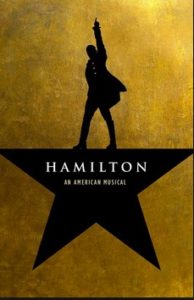If you grew up in the 1980s, chances are hip-hop was a constant fixture on your local radio station. From Salt-N-Pepper to the Beastie Boys, the fast-paced rhyming style took the musical world by storm.
Its origins go back to August 11, 1973 in New York City’s Bronx. At 1520 Sedgwick Avenue, to be specific.
That’s where Clive Campbell, better-known as DJ Kool Herc, kicked out some fresh rhymes in the recreation room of an apartment building for his sister’s birthday.
By then, Campbell had been perfecting his craft for more than a year. But it would be another full six years before hip-hop became an indelible part of popular culture: in 1979, New Jersey’s Sugarhill Gang hit number 1 on the Billboard Hot 100 with “Rapper’s Delight”–the very first hip-hop song to make it to the top of the charts.
And in the music industry, hip-hop quickly became a force to be reckoned with.
Today, hip-hop is enjoying something of a second life. Educators around the country are discovering that students can be more involved in learning new vocabulary and reinforcing strong reading by using some of the skills of hip-hop.
Here are a few ways hip-hop is being used in education:
 Flocabulary https://www.flocabulary.com/
Flocabulary https://www.flocabulary.com/
Flocabulary was founded by two musicians who met in San Francisco while waiting tables after college in 2003. Co-founder Blake Harrison believed since high school that a great way to learn–and more importantly remember–SAT vocabulary words was to put them to music. Flocabulary comes into schools, working with teachers and students creating memorable songs and even videos focusing on vocab lists across grades. Today, the company partners with more than 20,000 schools across the country and employs a full-time staff of forty-seven at its Brooklyn office.
 Hamilton the musical http://www.hamiltonbroadway.com/
Hamilton the musical http://www.hamiltonbroadway.com/
Created by Broadway veteran Lin-Manuel Miranda, Hamilton tells the story of founding father Alexander Hamilton through a medium that admittedly would be completely foreign to the actual founders of America: hip-hop. But in using intricate rhymes and street beats, Miranda has created an international smash hit AND brought entirely new audiences to the theater. In terms of vocabulary, Hamilton provides a rich variety: everything from ‘polymath’ (from the Greek words meaning ‘much’ and ‘learn’) to ‘protean’ (able to change easily). Teachers use the soundtrack to both bring early American history to life, but also to boost vocabulary, while the catchy tunes will help students remember what they’ve learned.
For vocabulary lists and activities from Hamilton, check out: https://www.vocabulary.com/lists/1054842/practice
Online, a key hip-hop resource is The Hiphop Archive: http://hiphoparchive.org/ There, teachers can find in-depth biographies of artists, annotated lyrics and songs to incorporate into lesson plans.
